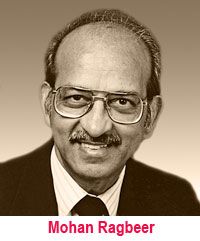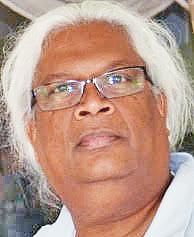Opinions
Faux pas

assaulting Ujjal Dosanjh, the moderate BC Sikh politician, later Premier, who had criticised religious extremism. Including Atwal in the party and inviting him to official functions were careless; had Trudeau acknowledged the error, he might have escaped further criticism, had he not accused the Indian government of orchestrating the gaffe. Today, Atwal claims that he no longer supports Khalistan, and the movement has withered in India. The issue of Khalistan troubles India, especially as Pakistan seems to be encouraging it, politically and financially. The expressions are not as clear in India as they seem here, where pro-Khalistan politicians have been elected and hold senior posts, e.g. Jagmeet Singh was Opposition Justice critic in the Ontario legislature, where he raised pro-Khalistan issues at least twice. Yet, on being elected leader of the federal NDP, he told CBC’s Terry Milewski that he did not know who was responsible for the 1985 Air India bombing. Incredible!
To recap the sequence of events: it started when the Indian Government raided the Golden Temple at Amritsar, in 1984 (Operation Blue Star), followed by formation of the World Sikh Organisation in Canada and USA to retaliate, then Indira Gandhi’s murder by Sikh bodyguards, and a backlash of anti-Sikh violence in New Delhi that Jagmeet Singh extravagantly called “genocide”. WSO has bases in New York and Ottawa, a brisk social agenda, and is openly anti-Hindu. A group of Canadian activists, led by Talwinder Singh Parmar, a Canadian wanted then for the murder of two policemen in India, for which Canada had refused an extradition, planned, with others, including Inderjit Singh Reyat, a simultaneous explosion of two Air India planes, one heading east, the other west. Indian agents discovered this and alerted Canadian authorities (RCMP and the newly-formed CSIS), who watched and wire-tapped the culprits. The plot was implemented on June 23, 1985, targetting Air India Flight 182, killing 329 persons, 285 Canadians. Yet astonishingly CSIS and RCMP did nothing to prevent the events, and indeed destroyed taped evidence of the planning, thwarting the trial, which lingered for 20 years. Canadians generally yawned, while relatives of victims mourned helplessly. Security and Justice had failed them. In March 2005, a court in Vancouver acquitted Ripudaman Singh Malik, and Ajaib Singh Bagri, based on Reyat’s lies; he was imprisoned, but remains unrepentant. Victims’ families insisted on an enquiry; they wanted to know why had the plot succeeded when RCMP and CSIS were watching and wiretapping? Why were their tapes of Parmar's conversations erased after the bombing, when CSIS knew his involvement? Why were the Indian warnings of an attack ignored? A year later, PM Harper entrusted a Commission of enquiry to retired Supreme Court Justice John C. Major. Parmar had earlier returned to India, where police killed him in 1992. He is revered by his Canadian admirers as a Sikh martyr. This was a year after Premier Sidhu had been assassinated.
Trudeau’s gaffe recalls the embarrassment suffered by BC politicians Gordon Campbell and Jim Abbott at a Sikh festival, a decade ago, in Surrey, BC, at which they unwittingly participated in honouring Talwinder Singh Parmar, whose portrait was proudly displayed in the proceedings, the man responsible for the worst massacre in Canadian history. Modi said, "There should not be space for those who misuse religion for political motives and promote separatism. We will not tolerate those who challenge unity and integrity of our country." Trudeau's first visit to India was thus spoiled by a cool reception due to an interpretation that the Canadian government supports extremist Sikh demands for Khalistan. After false starts, Trudeau finally told a CBC reporter, referring to the Parmar posters displayed at the BC temple, "I do not think we should ever be glorifying mass-murderers, and I'm happy to condemn that."
Justice Major said, "Canada and Canadians in general did not immediately recognise this as a terrorist attack upon Canadians." His report, released on June 17, 2010, covers over 3000 pages.
In the mix of things during milk-days
 Romeo Kaseram
Romeo Kaseram
It was a mid-week treat for many of my classmates during our primary school days back home, when it was mandated by an imperial government across the seas that we needed iron-hard bones, with teeth white and unassailable to decay, so when we grew up we would become colonised, hard-working servants of the Empire. How this was accomplished was through a weekly doling out of a reconstituted cup of milk to each of us on a Wednesday morning. As part of the regimentation taught when we assembled between lines whitewashed on the asphalt outside our classrooms after the bell “called” with its
imperative, summoning voice, we were made to line up for patient, forward movement, one step at a time, making our way to a designated table where plastic cups by the hundreds were similarly assembled with predictable, military precision. Into each cup was a constant pouring down from the height of one of the taller, lanky, and older schoolgirls, the descent of the mix of powdered whole-milk and lukewarm, pipe-borne water from an orange jug performed with such expertise it quickly arrived at the rim with energy and frothiness, promising to deliver nothing less than that from which it was mixed, which was instant and hopefully revitalising.
In this expressed concentrate of milk and pipe-water was another concentration, this time in the hand-and-eye coordination of the schoolgirl being made ready for the outside world and motherhood. Here she was in the mix of things, at the threshold, in a place of transition, who inhabiting one of the advanced classes for school-leavers, and having not passed the entrance exams for higher, secondary school education, was now being groomed with lessons focusing on life-after-school.
It meant her immersion into classes for home economics: cooking, sweeping, washing, sewing – needlecraft and embroidery, the preparatory grounding for child-rearing in the mixing of baby formula in a mimetic of Wednesday-morning milk, all of these adult responsibilities soon to come with matrimony and family life following her tenure in school. So here we were as subjects she could pass with distinction, this young lady practising on us young school-kids as a mother-hen-to-be, clucking reproachfully at our spills, shooing us along with lanky arms bony as wings, as if we were so many wayward, clumsy chicks, her haste causing us to bump into each other so the milk slopped among our toes and splashed down to make sticky the wet, concrete floor.
Among the helpers in her pecking order was another school-leaver, a sterner designate with a face as no-nonsense as a nun. This was a face set on the one-way gates of a convent. So it was she stood with the resolve of a gatekeeper, ensuring no distractions detained any of her charges during her watch as we bumped along toward the hundreds of cups of milk on that predetermined path set by those above, the long-term plan being so we could acquire strong bones and teeth as we made our way to adulthood and the coloniser’s heaven.
Her role was to ensure no earthy contamination overtook us or the milk, and for this she was entrusted with a formidable instrument that was a cross between a rod of correction and a fly-swat. It was this instrument which she wielded with formidably accuracy, dealing simultaneously with two swarms. The first swarm was intercepted with lightning bolts of destruction descending on flies as numerous as the cups, which were constantly attempting kamikaze dives into a jaundice-yellow bucket where the mother-batch of milk was being agitated with a wooden-handled, wire whisk.
No fly escaped her vengeful wrath, so accurate was her mighty hand. Each swat was so precise at the very rim of the bucket that no fly entered, its body broken to dispatch the soul with finality and certainty, so it would arrive among the eternal flames in that hellish place reserved only for the infectious, the quick, and the dead.
In its quiet moments, when the flies were regrouping for another assault on the unassailable bucket, the fly-swat was deployed to ensure we did not swarm the site where we received the treat for which we endured the rigours of the reconstituted milk. Indeed, there was a reward for after drinking each cup of milk, and this was why we downed it in one go.
It was not to ensure coverage of the upper lip for the vicariousness of the milk-moustache, the resulting laughter a rehearsal of the self-consciousness to arrive with our metamorphosis into adulthood. Instead, it was the simplest of treats – two sweet biscuits, for which we swarmed hugely forward as an unruly mob, only to be greeted by the restraining, downward strokes of the fly-swat deployed with religious zeal among our bare legs.
We rubbed each biscuit together, making a sugary powder, and creasing it into a torn copy-book page for sneaking-in as a snack in class. With the teacher turned to the chalk-board, we surreptitiously lifted this delightful dust to mouths with a wet forefinger as the hours stretched long, and the lactose-intolerant ran endlessly among us throughout the afternoon.
